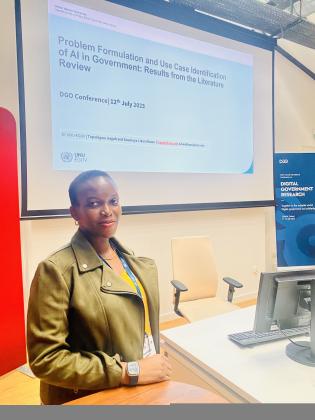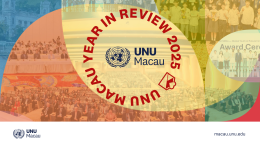The dg.o Conference brought together researchers and practitioners to present and discuss the implementation of digital technologies in government to improve the operation and delivery of service to citizens.
Tupokigwe Isagah, Research Associate and expert in Artificial Intelligence (AI), and Soumaya Ben Dhaou Research Specialist at UNU-EGOV co-authored a paper presented in the conference track on Assessing and realizing the use of AI in the public sector.
The paper Problem Formulation and Use Case Identification of AI in Government: Results from the Literature Review is part of the ongoing research from Research Line 2 on Digital transformation, innovation and emerging technologies (RL2) focusing on realising the implementation of AI in government. The study’s early results showcase the need for a clear plan for this emerging technology in government processes, which includes identifying AI-related problems and proposing viable use cases before initiating the design process. Not only are there limited approaches supporting such methods, also, these existing ones are either dedicated to private sectors, that are business oriented or do not comprehensively guide practitioners in the process of formulating AI problems and identifying use cases.
This work demonstrates the gap and proposes important contributions for successful planning, including:
- A dedicated method to guide practitioners in the process;
- The evaluation of AI fitness to the problem to check whether a problem can be solved by other solutions or not;
- The assessment of the readiness of the public sector in terms of organisational, technological, and process levels to embrace AI;
- The societal impact component to assess the readiness of end users and technology implications to their lives and society at large;
- The stakeholder management to assist in identifying and establishing the ecosystem once the technology fits in solving the problem.
Currently, RL2 is planning on validating the components from AI practitioners in local government and determining other aspects that are relevant for planning this technology for government use. Since this requires careful implementation, determined by the carryout of the software’s lifecycle phases, future research will also investigate important aspects of it’s application stage.



